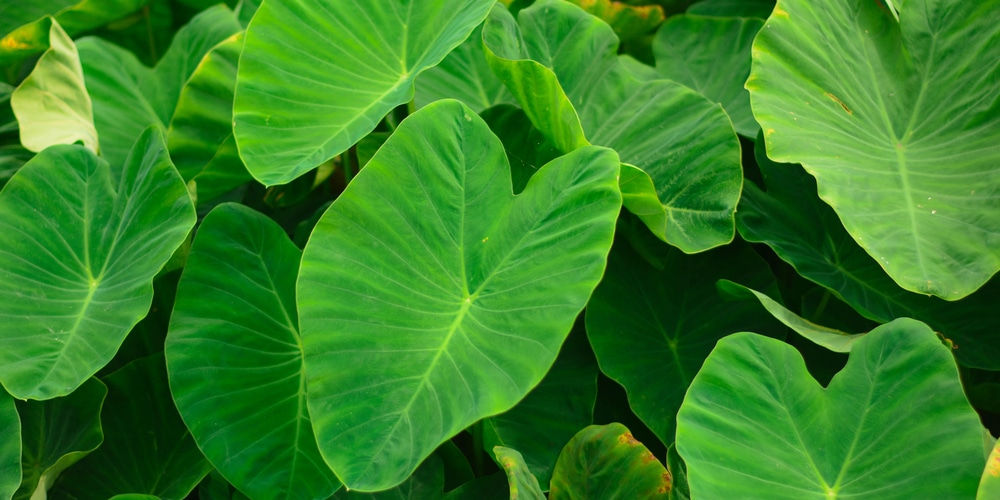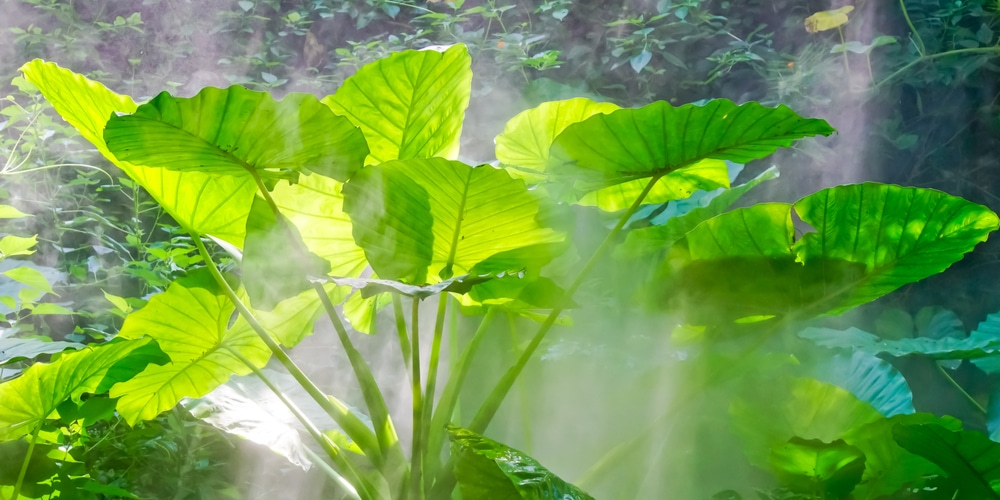The elephant ear plant, or taro, is native to Southeast Asia and India, which means that it thrives in subtropical and tropical environments. However, it is currently an invasive species along the Gulf Coast of the United States because it is propagating so well and encroaching on land and nutrients that native wetland plants need to survive.
That doesn’t stop plant enthusiasts from cultivating this gorgeous, huge-leafed plant in their yards. It shouldn’t stop you either because these plants are easy to take care of, and you can even eat the roots of some of these species.
Elephant ear plants need plenty of sun and water—this is reflective of their origins, as Southeast Asia and India have only two seasons: dry season and rainy season. This is why elephant ear plants adore the Gulf Coast—the climate and weather patterns are similar to their native habitat.
How Can I Prepare My Elephant Ear Plant for Winter?
In the Deep South, your elephant ear plants may not have to be stored away if you live in southern Alabama, Mississippi, Georgia, or Florida. Even if you live somewhere warm and give your elephant ear plant plenty of water, most places in the United States do have some form of winter snap, if not an outright freeze, each year, especially in the northern areas of the country; winter can be brutal. So how can you take care of your elephant ear plant through the wintertime?
With commercial cultivation in temperate zones, elephant ear plants remain planted in the ground during the spring and summer months and then dug up and stored in a dry place during the winter to prevent fungus growth and keep the frost from killing them.
You can use the same method to care for your elephant ear plants during winter to replant them in the spring. If your elephant ear plant is well cared for it can bloom in the spring.
How To Prepare and Get Your Elephant Ear Plant Through the Wintertime
1) After the first frost in your area, it’s time to take action. You need to cut the stems down to where they’re only a few inches tall. This does mean removing the leaves.
2) Next, you’ll need to dig up the tubers. These are like potatoes and are used as such in many cuisines around the world.
Carefully dig around your elephant ear plant until you’ve dug up the root system and the tubers. It’s important to be extra careful—if you damage the plant’s tuber, it could rot over the winter, and your elephant ear plant won’t survive replanting.
3) Once you’ve cut the plant’s stems down to about six inches long and you’ve dug up its tuber(s), it’s time to prepare the elephant ear plant for storage. Place the tubers inside a bag, like a plastic shopping bag, and surround them with nourishing soil made of a mixture of potting soil and peat moss. You can also put the tubers into a pot, as long as you ensure the plant stays dry while storing it.
4) You do need to add some water to the potting soil mixture, whether the tuber is in a bag or a pot.
5) The final step is to place the elephant ear plant in a dry, dark place, ensuring that it stays dormant (doesn’t actively photosynthesize or grow new stems) while in that location.
When Can I Replant My Elephant Ear Tubers?
Once the soil temperatures reach above 65 degrees Fahrenheit through a 24-hour period, and the ambient temperature doesn’t dip lower than 60 degrees, you’re free to replant your elephant ears.
You can plant them just beneath the ground’s surface in nutrient-rich soil. Water the area thoroughly, and prepare to welcome your elephant ear plants back in around a month or two. You won’t have to dig it up again until the next frost, which should give you seven to nine months to enjoy your elephant ear plant.

